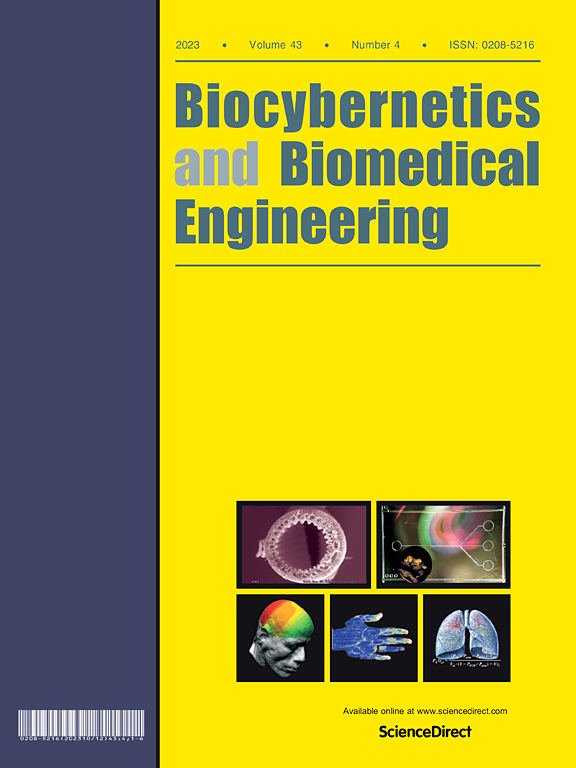Validation of a markerless motion capture system for centre of mass kinematic analysis
IF 6.6
2区 医学
Q1 ENGINEERING, BIOMEDICAL
引用次数: 0
Abstract
In recent years, markerless optical systems for biomechanical movement analysis in sports, gait and balance assessments are being used as an alternative to conventional marker based measuring systems. This study compares the performance of the Zed 2i stereoscopic camera against a VICON system in a standing position under three conditions: quiet standing and two movements simulating disturbances in two directions, anteroposterior and mediolateral. This study originates from a collaborative project with a medical team that aims to objectively evaluate balance function in patients recovering from stroke. The displacement and velocities of the centre of mass were calculated and compared in two directions, x and y. A Bland–Altman analysis for non-parametric data, along with the coefficient of determination and mean square error, were used for statistical evaluation. The results demonstrate that the limits of agreement in both sway tasks were greater than those observed in static conditions. However, the coefficient of determination of the sway tasks indicates a significant degree of agreement between the two systems. In contrast, in the static condition, it appears that noise may have a greater influence on the signal than the centre of mass estimate, due to the limitation of the depth algorithm used to estimate the joint positions.
一种用于质心运动学分析的无标记运动捕捉系统的验证
近年来,用于运动、步态和平衡评估的生物力学运动分析的无标记光学系统正被用作传统基于标记的测量系统的替代方案。本研究比较了Zed 2i立体摄像机与VICON系统在三种情况下的站立性能:安静站立和模拟两个方向(前后和中外侧)干扰的两次运动。本研究源于与一个医疗团队的合作项目,目的是客观地评估中风恢复期患者的平衡功能。计算质心的位移和速度,并在x和y两个方向上进行比较。非参数数据的Bland-Altman分析以及决定系数和均方误差用于统计评价。结果表明,两种摇摆任务的一致性限制大于在静态条件下观察到的。然而,摇摆任务的决定系数表明两个系统之间有很大程度的一致性。相反,在静态条件下,由于用于估计关节位置的深度算法的局限性,噪声对信号的影响似乎比质心估计更大。
本文章由计算机程序翻译,如有差异,请以英文原文为准。
求助全文
约1分钟内获得全文
求助全文
来源期刊

Biocybernetics and Biomedical Engineering
ENGINEERING, BIOMEDICAL-
CiteScore
16.50
自引率
6.20%
发文量
77
审稿时长
38 days
期刊介绍:
Biocybernetics and Biomedical Engineering is a quarterly journal, founded in 1981, devoted to publishing the results of original, innovative and creative research investigations in the field of Biocybernetics and biomedical engineering, which bridges mathematical, physical, chemical and engineering methods and technology to analyse physiological processes in living organisms as well as to develop methods, devices and systems used in biology and medicine, mainly in medical diagnosis, monitoring systems and therapy. The Journal''s mission is to advance scientific discovery into new or improved standards of care, and promotion a wide-ranging exchange between science and its application to humans.
 求助内容:
求助内容: 应助结果提醒方式:
应助结果提醒方式:


